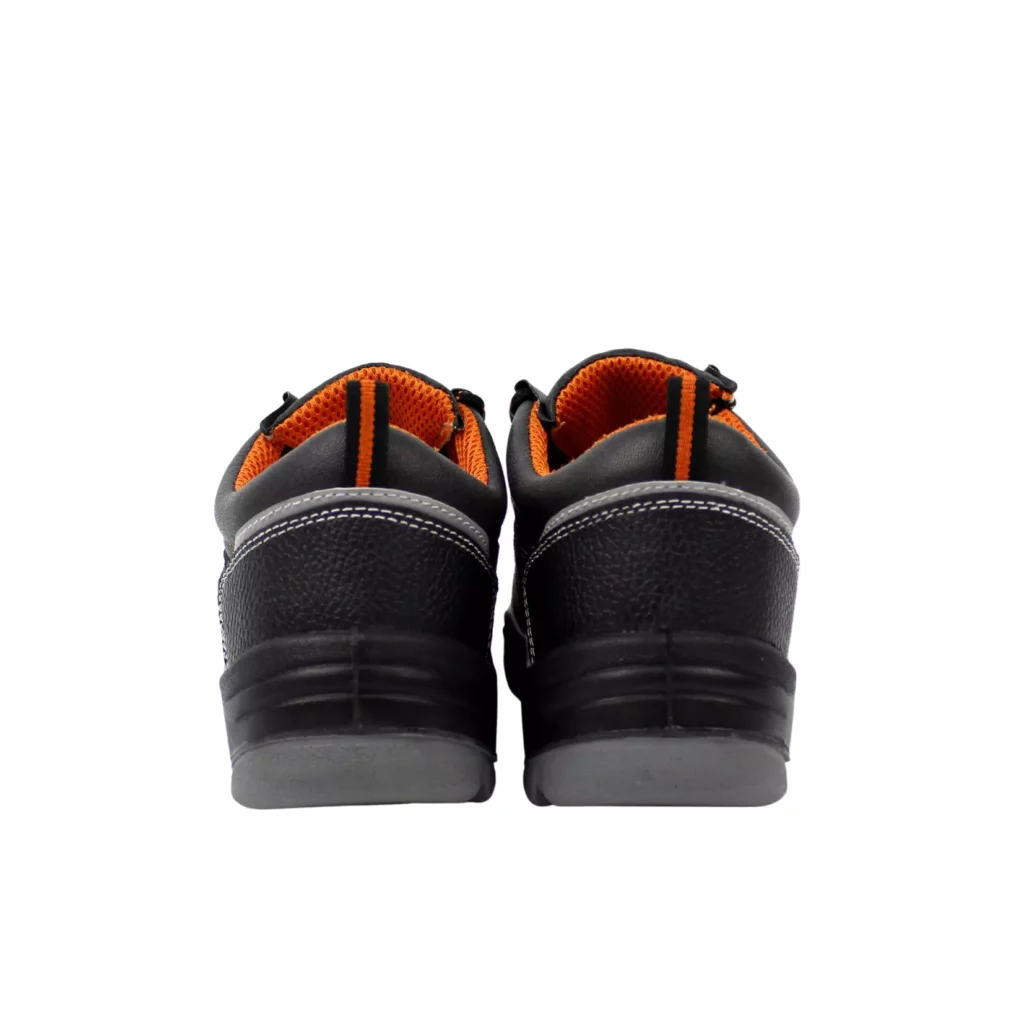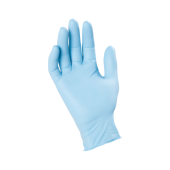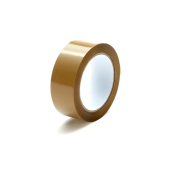Have you ever wondered how something as simple as a pair of leather gloves can impact your workers’ comfort and efficiency?
While it’s common knowledge that leather work gloves are a staple in various labour-intensive industries (like construction, welding, automotive repair, and carpentry), their popularity goes beyond just being “gloves made of leather.” The best leather gloves are the perfect protective equipment that blends durability with dexterity.
In this article, we will walk you through the various types of leather work gloves available on the market, all the specs that define their function, and their ideal use cases.
Here are the topics we will cover:
- When To Choose Leather Gloves?
- The Main Types Of Leather
- What Are The Leather Patterns And Grains?
- How To Select The Best Leather Gloves?
When To Choose Leather Gloves?
Have you ever paused to wonder why leather gloves are the go-to choice for so many hardworking individuals?
At the heart of this preference, we find lasting comfort and durability.
Of course, as with all PPE, leather gloves are particularly well-suited for specific use cases and professions. Here are a few of them and why:
- Construction and carpentry: Leather gloves can protect against splinters, jagged edges, and constant abrasion from bricks, wood, and metal. Plus, their durable nature means they’re less likely to tear or puncture.
- Welders and Fabricators: Leather’s natural resistance to heat makes it a go-to choice in professions like welding or metal fabrication. Thick, often reinforced leather can provide a critical defence against sparks, heat, and molten metal splashes, safeguarding hands in environments where temperatures can soar.
- Precision Tasks: Engineers and mechanics, often handling small, intricate parts, need gloves that allow for precision while still shielding the skin from oil, grease, and dirt. The right pair of leather gloves can ensure that even the most delicate components can be manipulated without clumsiness.
- Harsh Weather Conditions: As previously stated, leather work gloves are not only for keeping hands safe but for enhancing comfort. Lined leather gloves provide a good amount of insulation in colder climates making them a good fit for workers in outdoor roles like forestry or winter road maintenance, where losing manual dexterity to cold is not an option.
- Chemical Exposure: Specialized leather gloves, often treated with chemicals or oils, can offer protection against certain types of chemical exposures. These are particularly relevant in industrial painting or when handling non-corrosive materials, where gloves need to resist absorption and protect skin from hazardous substances.
Please note that these are general guidelines and the level of protection will vary based on product specs (level of cut resistance, chemical resistance, and so on…). For more detailed information on the best leather glove model for your use cases, you can get in touch with our product experts.
The Main Types Of Leather
Work leather gloves are made out of different leather types, but what makes each type unique in its own way?
Here are the main varieties of leather used in making work gloves:
- Pigskin: Renowned for its breathability, pigskin leather is the go-to for anyone seeking gloves that adapt over time. Its porous nature not only allows your workers’ hands to breathe but also guarantees the gloves become increasingly soft with each use. Remarkably, even after exposure to moisture or a cycle in the wash, pigskin gloves retain their shape and functionality.
- Cowhide: Cowhide strikes a balance between affordability and robustness. If you’re after gloves that offer abrasion resistance and a comfortable, warm fit, especially under cooler conditions, cowhide may be the best option for you.
- Goatskin: Goatskin is a great option when fine dexterity is a top priority. Plus, the natural lanolin present in goatskin adds to its waterproof and abrasion-resistant qualities, making these gloves ideal for precision tasks requiring tactile sensitivity.
- Deerskin: Softer and more pliable than cowhide, deerskin can last extended wear while providing warmth. This makes deerskin leather gloves a superior choice for colder climates, where maintaining hand mobility and comfort is a must.
- Synthetic Leather: Exploring synthetic options, we encounter PU leather and bonded leather. PU leather, a fully synthetic material, is designed to replicate the texture and qualities of genuine leather without using any animal hide. It’s often preferred for its versatility and animal-friendly production. Bonded leather, on the other hand, utilizes leftovers from genuine leather production, combined with polyurethane binders to mimic the feel of real leather. While it contains a small fraction of real hide, its eco-friendly approach and lower cost make it a practical option for everyday use.
What Are The Leather Patterns And Grains?
So far, we’ve established that the kind of leather selected for the manufacture of work gloves not only defines their feel but also their suitability for specific tasks.
Another aspect you should take into account, on top of leather type, is different patterns and grains.
The main patterns for leather work gloves are:
- Gunn Cut: This cut features a single-piece back, which eliminates seams on the working area of the palm, offering a smoother and more comfortable fit. This design integrates the two middle fingers sewn separately into the palm, which improves finger agility. This type of cut is practical for users who regularly manipulate tools or materials, as it provides a durable, flexible fit that conforms to the hand’s movements, ensuring a secure grip and prolonged glove life.
- Clute Cut: This cut is characterized by a one-piece palm construction without seams at the fingers’ base, resulting in a more spacious fit. The seams are located along the inside of each finger, allowing for a more relaxed fit. This design is typically seen as an economical option, providing the necessary coverage and protection expected from leather gloves, particularly in jobs requiring less precision and more general hand protection.
The main grain types for leather work gloves are:
- Top-Grain Leather: This type of leather is derived from the upper layer of animal hides. During processing, it is sanded and refined to create a smooth, uniform appearance. Top-grain is often used in industries requiring a combination of resilience and ease of movement, like construction or metalworking.
- Full-Grain Leather: Full-grain leather is the highest quality of leather, characterized by its minimal processing. It retains the original texture and markings of the animal’s hide, making it exceptionally durable. This quality makes full-grain leather gloves highly suitable for rigorous outdoor work, such as farming or heavy-duty construction, where longevity and toughness are top priorities.


How To Select The Best Leather Gloves?
Choosing the right leather gloves for your workforce is more than just picking a pair off the shelf. The purchasing process involves finding the optimal model that will provide a perfect blend of performance and protection.
Here are all the critical aspects you should consider in order to make an informed decision:
- Grip: The grip on your leather gloves can drastically change how your workers interact with both tools and materials. Take, for example, a landscaper working with delicate plants and tools. A palm grip on their gloves offers the sensitivity needed for intricate tasks, allowing for a gentle yet firm hold. Contrast this with an electrician who might prioritize fingertip grip gloves for added stability and control when handling intricate wiring and small components, ensuring safety and precision in a high-stakes environment.
- Material: Leather quality can define the lifespan and efficacy of your gloves. A welder, for instance, would choose thick, heat-resistant full-grain leather gloves. These gloves not only protect from the intense heat but also resist wear and tear from rough metal surfaces and sharp edges.
- Padding: Proper padding in gloves can be a game-changer, particularly in professions involving high-impact or vibration-intensive tools. Construction workers using jackhammers, for example, would benefit significantly from gloves with substantial padding, reducing fatigue and protecting from vibration-induced injuries over time.
- Lining: The lining in a glove isn’t just about providing comfort but enhanced functionality. Chemical engineers handling hazardous materials will need gloves with an adequate chemically resistant lining. This kind of lining not only protects the skin from harmful substances but also ensures that any accidental exposure doesn’t compromise the glove’s integrity or the task at hand.
- Fit and Size: The fit of your leather gloves is not a detail to be overlooked. Precision is key in roles like carpentry, where oversized gloves can lead to inaccuracies in measurements or tool handling, potentially causing safety issues or flawed workmanship. A glove that fits snugly, allowing for fluid motion and dexterity, is a must in any profession. For more practical guidelines on how to choose the best work glove size, read our blog post: How To Choose The Right Work Glove Size.

Conclusion
Leather gloves have become a staple in industries ranging from construction to precision engineering, as they provide protection, comfort, and dexterity. Be it handling rough materials in construction, intricate components in mechanical work, or enduring harsh weather conditions, there’s a leather glove suitable for each scenario.
Selecting the best model for your workforce involves understanding your use cases and what specs would suit them the most. Factors like leather type, grip, material, padding, lining, fit, and size significantly influence your choice.
Next, you can take a look at our comprehensive leather work glove selection from 100+ vetted European suppliers or get in touch for a personal consultation on the best models for your business, budget, and use cases.

























